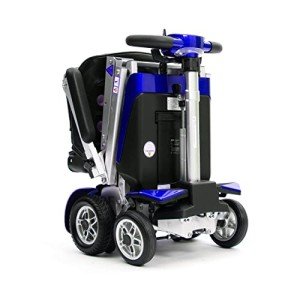What's Holding Back In The Mobility Scooters Industry?
Mobility Scooters: A Comprehensive Guide
Mobility scooters have ended up being a vital mode of transport for numerous people dealing with mobility challenges. This post explores the numerous elements of mobility scooters, including their types, advantages, functions, and a guide for prospective buyers.
Understanding Mobility Scooters
Mobility scooters are electrically powered devices designed for individuals with restricted mobility. They supply a means of transportation for people who may have problem walking however still wish to retain their self-reliance. They can be found in various styles and functions to cater to a wide variety of requirements.
Kinds Of Mobility Scooters
Mobility scooters can typically be classified into 3 main types:
Type
Description
Best For
Compact Scooters
These are small and lightweight, ideal for inside your home and short trips.
Users with minimal storage space or those who travel often.
Mid-size Scooters
A balance between portability and stability, ideal for both indoor and outdoor usage.
Those who need to cover a variety of surfaces.
Heavy-duty Scooters
Big and robust, designed for rugged outdoor use and heavier people.
Users needing additional weight capacity or going off-road.
Key Features of Mobility Scooters
The choice of mobility scooter often depends upon the features that align with specific needs. Here are a few of the key functions to consider:
Weight Capacity: Mobility scooters feature different weight limitations. It is essential to select a scooter that can sufficiently support the user's weight.
Variety: The distance a scooter can travel on a single charge varies. Depending upon user needs, one might select scooters with a series of approximately 40 miles.
Speed: Most mobility scooters can reach speeds in between 4 to 8 miles per hour. Consider what speed is comfortable and safe for the intended environment.
Turning Radius: A compact turning radius is important for indoor use, enabling simpler navigation in tight spaces.
Battery Type: The type of batteries utilized can impact the scooter's efficiency. Lead-acid and lithium-ion batteries are the most common.
Benefits of Using Mobility Scooters
The advantages of mobility scooters extend beyond just transport. Some key advantages consist of:
Independence: Users can browse their environment without relying on caregivers, promoting independence and self-confidence.
Health Benefits: Using a scooter can encourage outdoor activity, leading to physical and psychological health enhancements by decreasing sensations of isolation.
Convenience: Scooters can easily be run in various environments, whether indoors, in shopping malls, or outdoors.
Crucial Considerations When Buying a Mobility Scooter
When acquiring a mobility scooter, a number of considerations can assist guarantee that you choose the right design:
Assess Individual Needs:
- Mobility level: Consider how much assistance the individual will need.
- Variety of usage: Determine where the scooter will mainly be used (indoors, outdoors, on rough terrains, and so on).
Test Drive:
- Always test drive numerous models to discover an appropriate fit. check it out on convenience, ease of steering, and the scooter's responsiveness.
Evaluation Safety Features:
- Look for scooters with appropriate safety functions like lights, indicators, and anti-tip designs.
Inspect Warranty and Service Options:
- A dependable guarantee and readily available service choices are essential for long-lasting use.
FAQs about Mobility Scooters
**1. How fast do mobility scooters go?Mobility scooters usually have speeds varying from 4 to 8 miles per hour, with many created for security instead of high-speed travel. 2. Exist weight limitations on mobility scooters?Yes, mobility
scooters come with specific weight limits, often varying from
250 lbs to over 500 pounds, depending on the design. 3. Can mobility scooters be utilized indoors?Certain models, especially compact scooters, are particularly developed for
**indoor usage and are much easier to navigate in tight areas. 4. How often do the batteries require to be replaced?Battery life can vary based on use, however usually, with proper care, batteries may last between 1 to 3 years before requiring replacement
**. 5. Are mobility scooters covered by insurance?Coverage can vary, however some insurance strategies, including Medicare and Medicaid, may cover part of the cost. It's advised to inspect with private insurance coverage service providers. Mobility scooters serve as a
important tool for numerous individuals, allowing them to maintain
their flexibility and self-reliance. By comprehending the various types and features of mobility scooters, people can make educated choices customized to their particular needs.
Whether used for errands, mingling, or leisurely activities, mobility scooters can improve the lifestyle for those with mobility constraints. Purchasing a mobility scooter is a decision that can substantially impact an individual's life. For that reason, individuals need to thoroughly examine their options and select a model that best lines up with their lifestyle and mobility requirements
.  ******
******